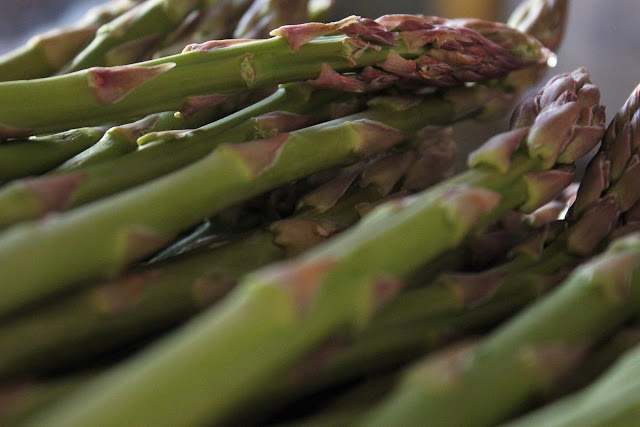Growing Asparagus...
Asparagus is a perennial plant, which means that if properly cared for, it will come back year after year. Asparagus patches have been known to live for 30 years or longer, but typically a patch will live for about 15 years. Because it is so long lived, it is important to prepare the soil properly and select an appropriate site. Asparagus likes sunny, well drained and fertile soil. Before planting, a good well rotted manure compost should be incorporated into the soil as deeply as possible, as well as a fertilizer that is heavy in potassium. Asparagus is a heavy potassium feeder and it is important to make sure it has a good supply available. Make 8-inch deep furrows in the soil and place 1-year old high quality asparagus crowns into the furrows. Cover the crowns with 2-inches of soil, there should still be a bit of a furrow. As spear growth progresses through the summer, continue to fill in the furrow until it is level with the surrounding soil. Water 1-2-inches every week for the first three years of growth, after that you can reduce watering to every three to four weeks.
Care should be taken to allow the plants to develop a good root structure. The first two years after planting, you will not harvest any asparagus. The road to tender green shoots requires patience. By not harvesting, you allow the roots to establish, to build up stores of carbohydrates and become strong. The third year, you can begin to harvest. You can harvest for four weeks during the harvest season, then you must allow the plants to develop ferns to restore their nutrient supplies. Cut the spears that are 9-inches or longer and are larger in diameter than a pencil. Be vary careful when cutting the spears as not to damage other spears lying just under the soil surface. Stop harvesting when the majority of the spears are thinner than a pencil. After harvest, you should fertilize the plants with a complete fertilizer. Continue to water, and allow the ferns to grow. After the ferns have died back in the late fall or early winter, they can be removed. I typically don't clean up our patch until early spring the next year.
Get busy this spring and plant yourself a little patch of green goodness!!!
For further information click here for a fact sheet on asparagus growing...






Comments
Post a Comment